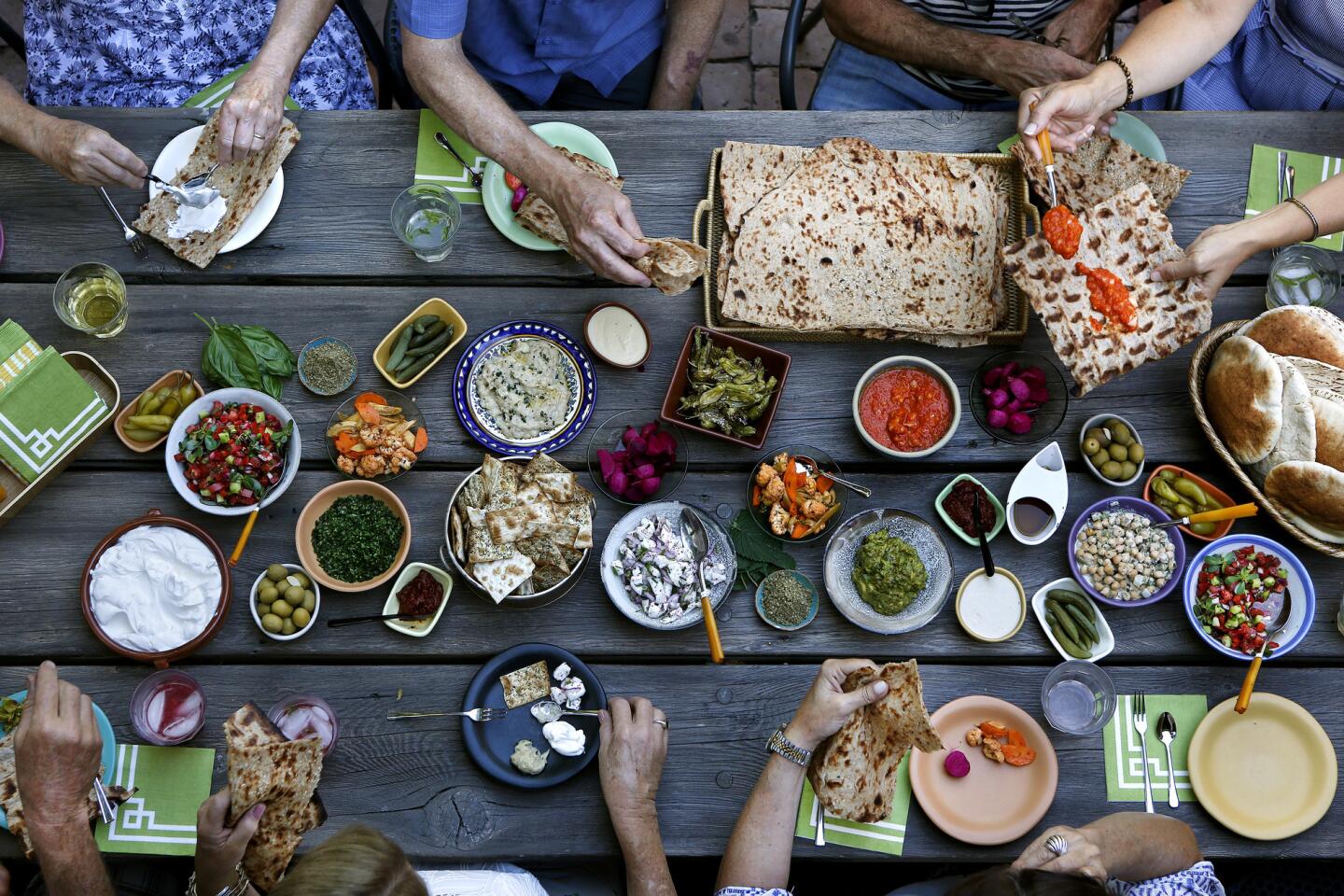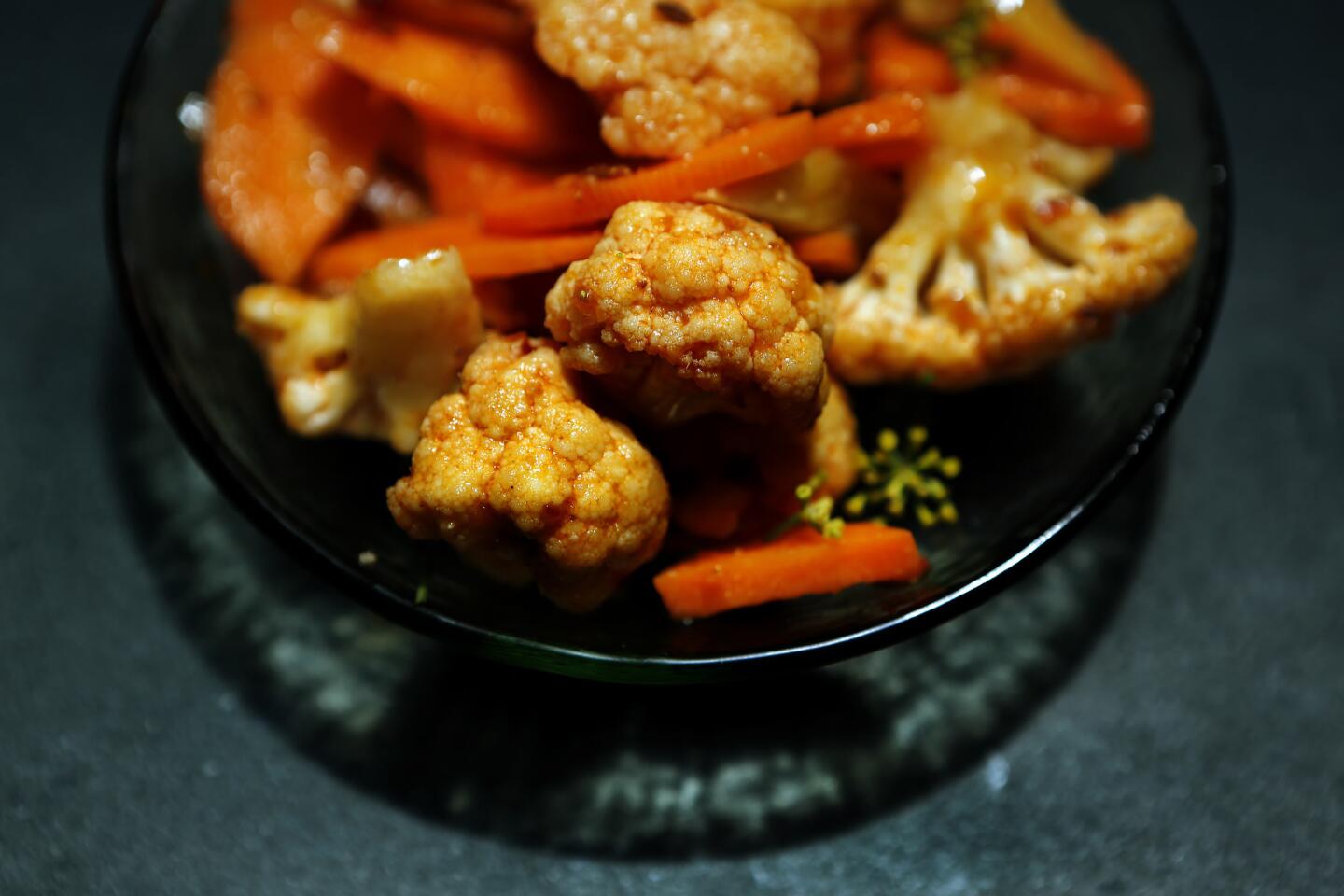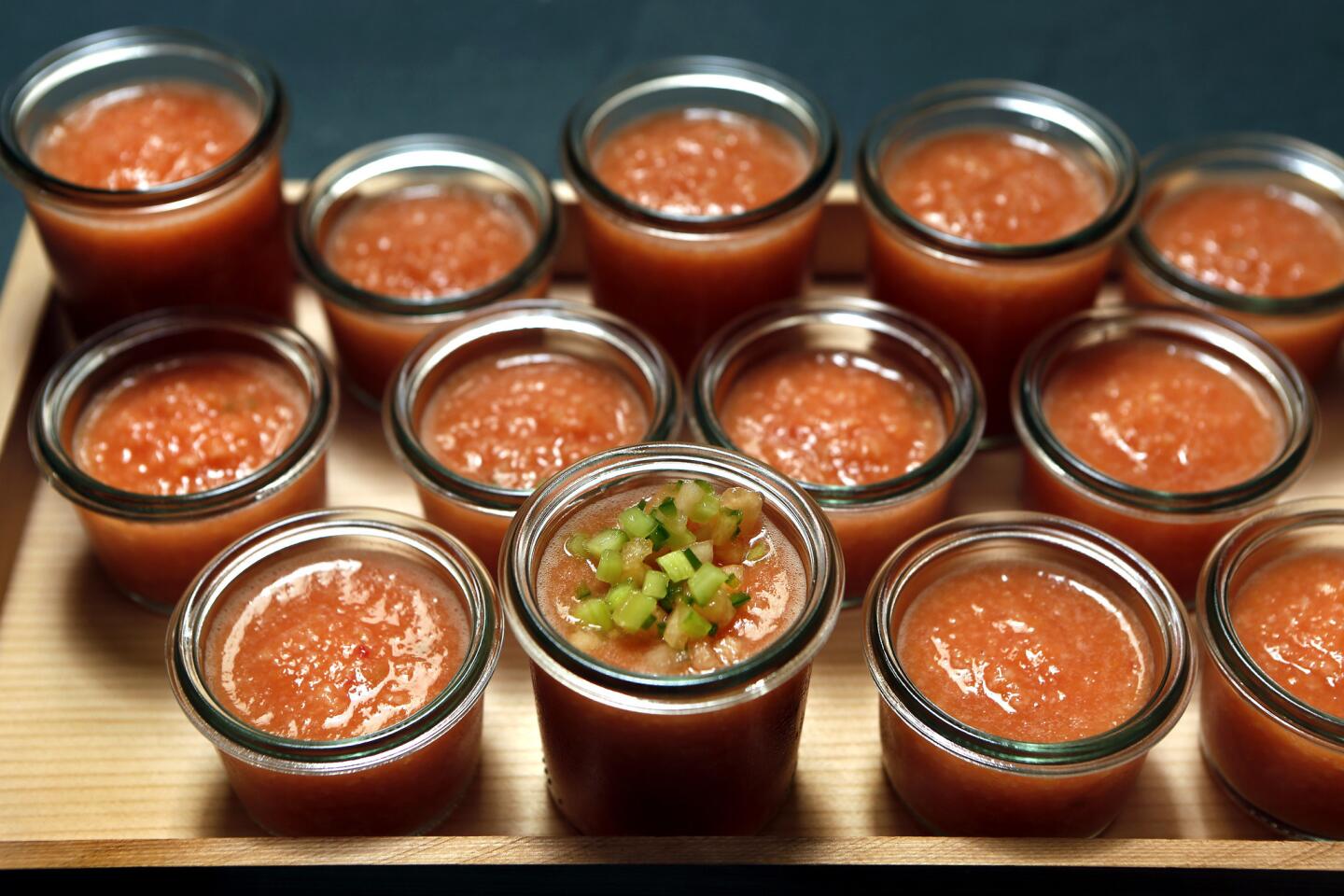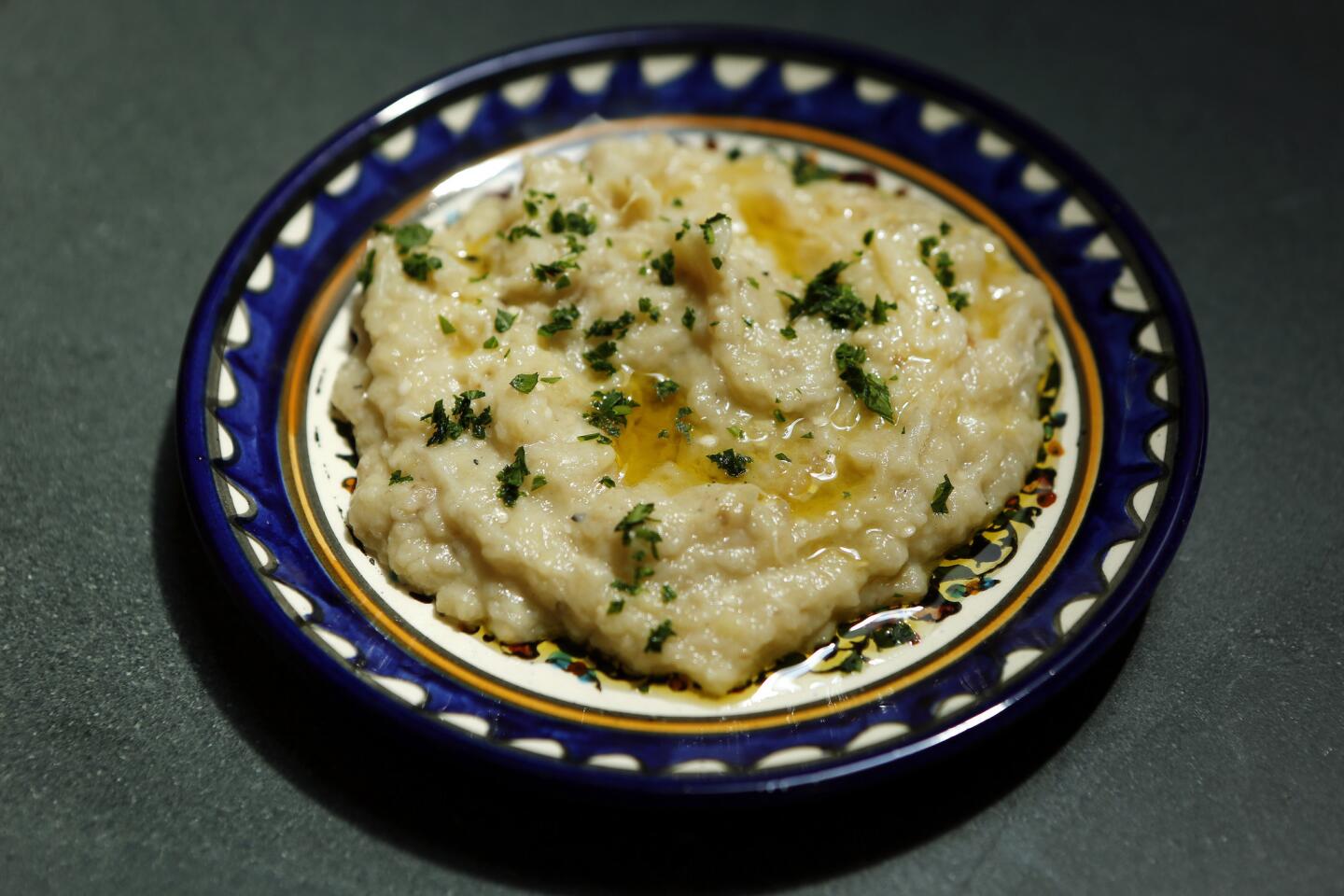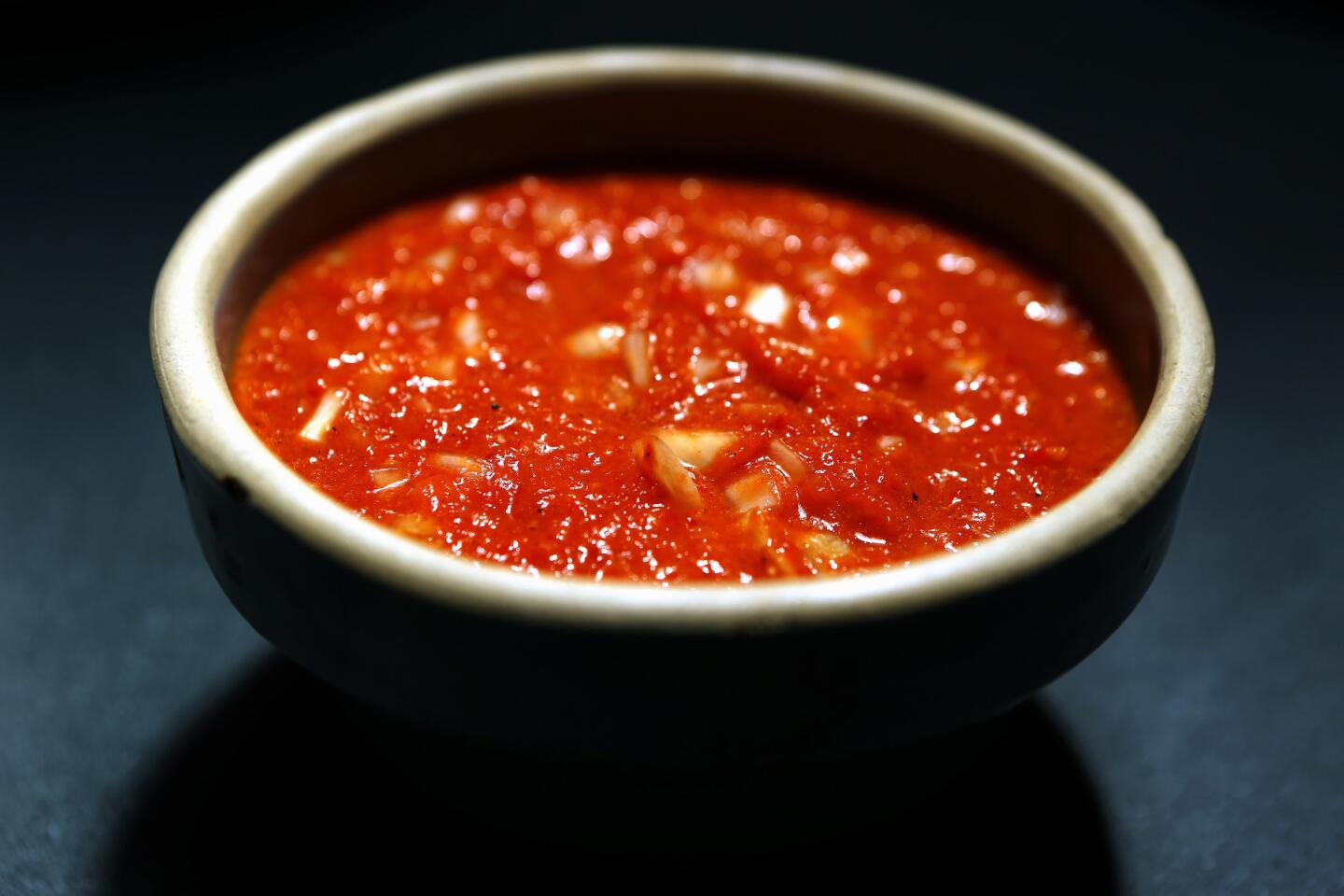How to throw an Israeli-SoCal mezze party
- Share via
Since my most recent trip to Israel, my favorite summer entertaining format has been salatim, Hebrew for “salads,” a do-ahead array of small cold plates, condiments and flatbreads that guests dip, scoop, spread, tear and combine to their hearts’ content. No courses to manage or food to keep hot, and only enough people to crowd comfortably around the table, so that all the food is within reach — and so is the conversation.
Salatim are a kind of mezze, the traditional selection of small savories like baba ghanouj, dolmas and kibbe, such as you’d find on Greek, Turkish or Lebanese appetizer menus. The Israeli version is an eclectic mix of mostly spreads and salad-y things from the tiny country’s many culinary traditions: North African, Druze, Bedouin, Arab, Russian, Iranian, Romanian and more. There are more than 150 cultures and ethnicities there, so almost anything goes — the defining principle is boundlessness. Salatim are a popular starter at grill restaurants, which often advertise all-you-can-eat assortments upward of 25 items.
25!?! Don’t worry, you won’t need that many small plates to create a decadent table. Even so, by using a mix of homemade and not — life should be easy for the host too — you’ll be amazed how quickly the number of offerings mount. The key is small; a little bit of a lot of things goes a long way.
Recipe: Melon and tomato gazpacho >>
There are a few simple guidelines. Choose dishes that can be prepared ahead, will hold at room temperature and improve as they stand. Think about compatible foods that can be combined in countless ways or fill a pita. Include contrasting flavors, textures and colors: spicy, sour, salty, creamy, crunchy, earthy and bright. And take full advantage of flavorful summer produce.
On a recent afternoon when the thermometer topped 100 degrees inland and neared 90 in my Santa Monica backyard, I started with a cool, creamy labneh. A canvas for many foods, the tart yogurt guided my next choices. I added small bowls of spicy harissa, olive oil and za’atar (the Middle Eastern seasoning mix of wild thyme or hyssop, sesame seeds, sumac and salt) to the table. I made Israeli salad, labneh’s classic partner: diced ripe tomatoes, crisp Persian cucumbers, sweet red peppers, onion, kohlrabi and parsley, dressed with olive oil, lemon and salt.
Recipe: Flame-roasted eggplant spread with lemon and garlic >>
Labneh is also the foundation of a terrific sandwich wrap that is the Druze contribution to Israeli street food. (The Druze are an Arab-speaking minority religious group; about 120,000 live in Israel, mostly in the north. Druze-Israeli home cooking has become a popular food tourism destination.) At market stalls and roadside stands throughout Israel, you’ll often find a woman in a gauzy head scarf sitting behind a portable taboun, a convex iron griddle, turning out thin whole-wheat flatbreads called laffa, or “Druze pita” (there’s also an Iraqi white-flour laffa that’s more like a pocket-less pita).

Recipe: Carrots, cauliflower and fennel harissa and caraway >>
Labneh is then smeared over most of one side of the laffa and topped with olive oil, za’atar, chopped parsley, diced tomatoes, hot sauce and red pepper puree. The whole thing is folded up into a sort of open-topped Middle Eastern burrito. Cool, spicy, smoky and chewy, it’s out-of-control good.
The fixings are easy additions to your table, but skip making the laffa. Instead, buy a freshly baked sangak, the Iranian 40-inch-long flatbread. (Although thicker and much larger, sangak more closely approximates the flavor and texture of Druze laffa than does lavash.) Cut the bread into wrap-size pieces, heat briefly in the oven, and add a fragrant stack to your mezze for people to do with what they will.
Boost the number of dishes with hamutzim, sours, that awaken the palate at Middle Eastern meals: briny green olives and home-cured or store-bought pickled cucumbers, tomatoes or beet-stained turnips, and hot pickled peppers referred to simply as harifim, “spicy things.”
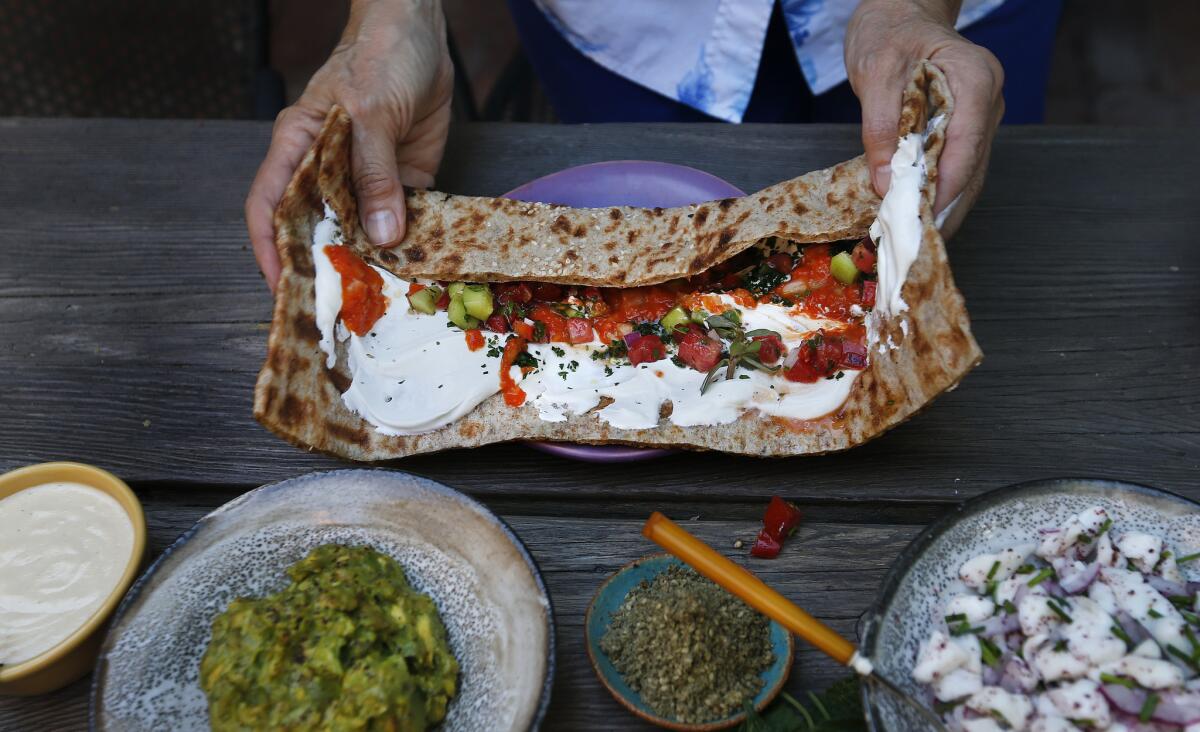
Recipe: Druze wrap with labne and za’atar >>
Speaking of spicy things, fiery Moroccan and Tunisian cooked or raw salads are de rigueur in a salatim rotation. Taking inspiration from a Tunisian cousin, a few days before my party, I marinated raw carrots, cauliflower and fennel in a mixture of harissa, lemon, olive oil and caraway. Halfway between salad and condiment, the combination put me in mind of a Tunisian giardiniera. Best of all, any leftovers continue to improve with age.
Do something with eggplants, which are amazing right now — heavy, shiny and firm. At least once a summer, I make my mother’s Romanian fire-roasted eggplant salad. Spiked with garlic and lemon and fork-whisked to creaminess, it’s an ethereal kind of baba ghanouj. Fire-roasting is key; fast, high-heat cooking keeps the flesh white while infusing smoky flavor. The process is a bit messy, so do this a day ahead, either directly on the stove burner or a hot grill.
Another hot-weather option to consider for your table: a refreshing ceviche from fresh, preferably local fish. (Pacific halibut, white sea bass or snapper are all good here.) To keep its flavor profile in sync with the rest of the menu, I give my ceviche a Middle Eastern edge with tart sumac.
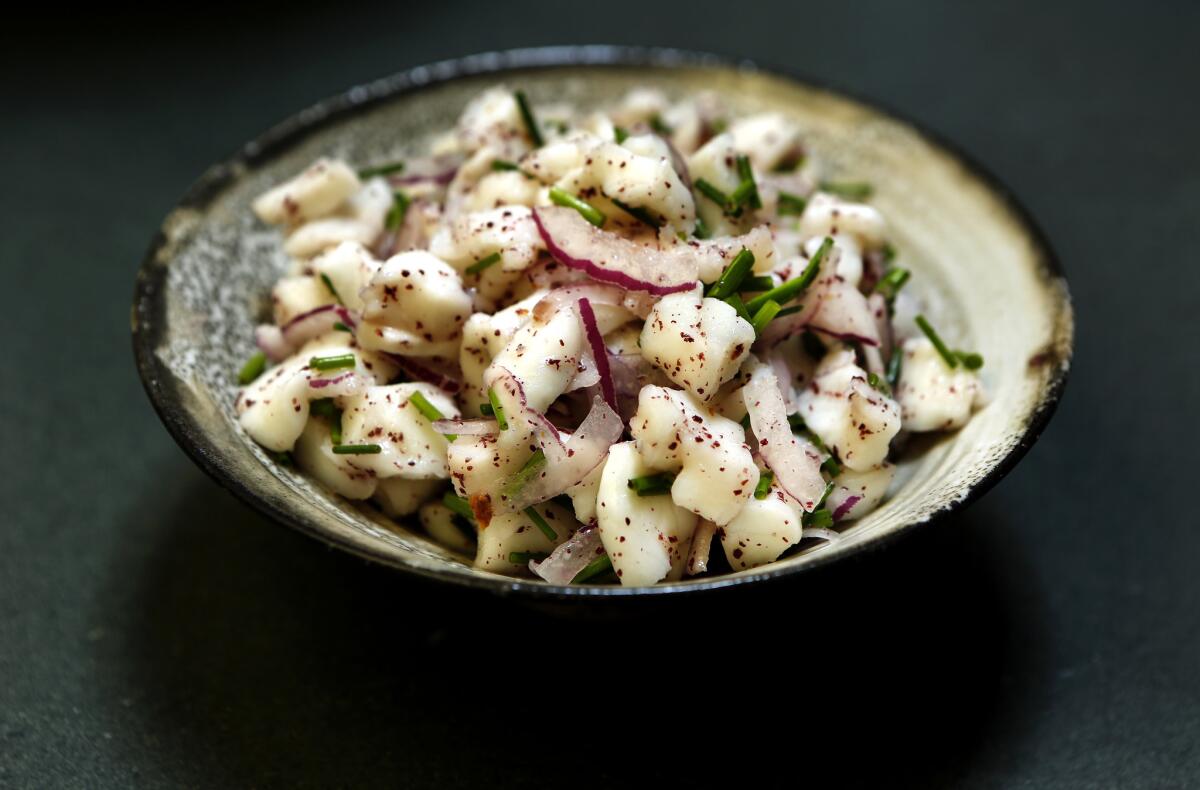
Recipe: Ceviche with Sumac and Aleppo pepper >>
About halfway through the party, I like to bring out small glasses of melon-tomato gazpacho that have been chilling in the fridge. You can match orange-fleshed melon with red, orange or pineapple tomatoes, or green-fleshed melons with green zebra tomatoes.
Finally, to round out the flavors, colors and textures in this lavish array, raid your pantry. For instance, smash a ripe avocado with lemon, smoked salt and sumac, or toss canned chickpeas with tahini, chopped dill pickles and parsley. Since tahini goes so well with so many things on the table, add that too. And if you must have something sweet, set out a bowl of ripe figs or a thick wedge of halvah — or both.
The ideas are boundless, so feel free to save some for your next salatim party. Because once you experience the pleasure of hanging out with your guests, there will be a next time.
Recipe: Druze secret sauce (roasted red pepper puree with onion Shards) >>
Amelia Saltsman is the author of “The Santa Monica Farmers’ Market Cookbook” and “The Seasonal Jewish Kitchen.”
What to drink at a mezze party:
Zesty summer foods pair well with rosés or cold beer, of course, but what else works with such a range of intense flavors? I turned for advice to expert Gaby Mlynarczyk, beverage director at Birch restaurant in Hollywood.
The first thing that came to her mind: a rebujito, a refreshing aperitif cocktail popular in Madrid tapas bars. “It’s a dirty lemonade made with manzanilla sherry, lemon juice and simple syrup,” Mlynarczyk says. “The sherry is nutty, slightly salty, light in alcohol, and goes great with seafood, salads and picky bits.” For each serving, use two ounces sherry and an ounce each of lemon juice and simple syrup. Stir, pour over ice and garnish with mint. Multiply the amounts to make a pitcher-full. Or, she adds, “you could muddle a bit of preserved lemon at the bottom of your Tom Collins, or your gin and tonic.”
In addition to summer rosé, Mlynarczyk suggests Mediterranean white wines that have a mineral finish, such as a falanghina from Campania, Italy, or an albarino or txakoli from Spain. An Austrian Gruner Veltliner or a dry Riesling from Oregon also would be lovely. Unfortunately, the exciting new boutique wines from Israel that would be perfect with this menu are hard to find here.
See the most-read stories in Life & Style this hour >>
As for beer, Mlynarczyk recommends a saison, an “aperitif-y farmhouse sour ale” or a Pilsner, white ale or Belgian lambic. But “avoid floral and hoppy beers and ales, and stouts — they’re too heavy for the season!”
What about the traditional pairing of anise-flavored arak or ouzo with eastern Mediterranean food? In Mlynarczyk’s opinion, they’re too intense and compete with other flavors. Best to save that for a digestif after you’ve enjoyed all those “picky bits.”
More to Read
Eat your way across L.A.
Get our weekly Tasting Notes newsletter for reviews, news and more.
You may occasionally receive promotional content from the Los Angeles Times.
